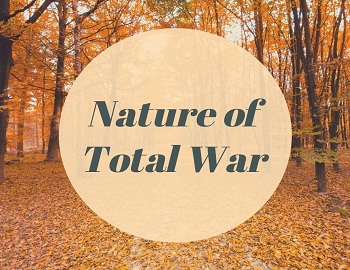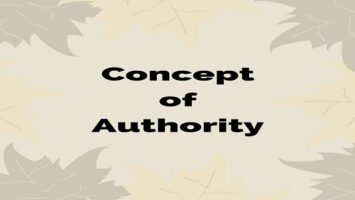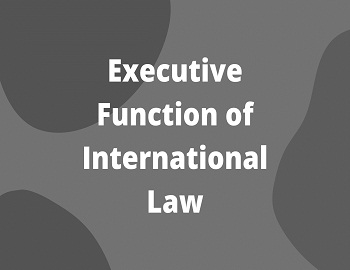Table of Contents
Nature of Total War:
The character of modern welfare has utterly changed the nature of war. Now war has become more total than in any period of history. At the end of World War II in 1945, the American Chief of Staff, General George C. Marshall observed, “We can be certain that the next war if there is one, will be even more total than this one”.
According to Prof. Hans Morgenthau war has become total in four different respects;
(i) The fraction of the population completely identified in its emotions and convictions with the wars of its nation.
(ii) The fraction of the population participating in the war.
(iii) The fraction of the population affected by war.
(iv) The objective pursued by war.
However, the nature of the total war can be best understood by analysing the war total. These factors are-
- National War.
- Effect of War.
- Mechanization of Warfare.
National War:
War has become total because the national unification of the 19th century and the national universalism of the 20th century made the national and gave the concrete idea to the masses to perish or to conquer for the cause of their nation.
Now almost all the citizens of the nation identify themselves with the war of their nation. In the totalitarian states not only all the persons who are physically fit are engaged in war but also children and women who participate in war. In the non-totalitarian states, the civilian population including women and children serves voluntarily as an auxiliary service to armed forces. But in the limited welfare, for example in the 14th and 15th-century Italian welfare, wars were fought primarily for the purpose of economic gains. At that time the civilian population had nothing to do with such wars and the people remained indifferent to these wars. This was, in fact, but natural because in the limited warfare an army of mercenaries was to serve its master only up to the term of their contract and as soon as the contract ended, they left their first master and contracted with another who would give them better benefits of service. So it was impossible for the masses to identify themselves with the wars of their nation. Thus with the development of national wars fought by the national armies, a new era in the history of warfare started which made modern wars total.
Effect of a War:
War has also become total because everybody, in some way or the other, is affected by war. Both the victor and the Vanquished have to become the victims of war. According to some estimates, the total losses in World Wars were about 10,00,000 soldiers and an equal number of the civilian population dead and 2,00,00,000 wounded, and another 2,00,00,000 dead from war-spread epidemics and famines throughout the world. World War II was more destructive than World War I. In the war, more civilians were wounded and dead than the military men. In this war, about 2,20,00,000 military and civilian persons died and 3,40,00,000 got wounded. According to C. Hartley Grattan, “No earthquake, no hurricane, no flood known to the record has matched World War II in destructiveness”. According to Grattan’s estimates in the 2nd World War, about 20 out of 100 residential buildings in Germany were destroyed, every fifth Greek was left houseless, Britain had 4,60,000 houses destroyed and the Japanese two and a quarter million. Even in New Guinea, numerous native villages were flattened to the ground.
The above figures of mass destruction in World War I and II make it clear that everybody is affected by the horrors of war. Thus, this trend in warfare has also made modern wars total.
Mechanization of Warfare:
Mechanization of warfare is the main factor that has made the modern war’s total. Modern science has accelerated the invention of monstrous devices. A century or two before there was no such thing as aircraft, submarines, radio communication, poison gases, missiles and atomic weapons. The First World War opened a new chapter in the history of warfare. The use of machine guns and submarines in this war made the mechanization of warfare possible. “The Second World War was”, observed Vannevar Bush in his pioneer work ‘Modern Arms and Freemen’, “far more than the first a war of applied science”. “In this war”, Vannevar Bush further observed, “there is no longer any such thing as exclusive land warfare. Amphibious operations and the interaction of air operations with the movement of armies ended all that”. In fact, the warfare in the Second World War became unlimited. Since World War I there came many new devices. “Warfare in the mid-twentieth century…..has become total in that virtually the whole earth is apt to be made the theatre of operations by any country fully equipped with the technological instruments of the age”.
Today, in fact, we live in the age of atomic warfare. An atomic bomb has become thousands of times more destructive than before. It has the capacity to destroy cities in a flash. Fo the first time in history man has the capacity to destroy the physical conditions from which he was evolved. Clark M. Eichelberger points out that “an atomic war would so destroy the fabric of modern society that man would be reduced to anarchy, isolated groups struggling to find a living from a contaminated earth”. Dr Edward V. Condon, the Director of the National Bureau of Standards in Washington, told us that, the beginning of a new war will surely involve not only launching of the missiles, but the explosion of the mines that have been secretly set near key targets”. Thus it is crystal clear that the mechanization of modern warfare has made war total”.



![President of India [Article 52-62]- GK 4 President of India](https://gkscientist.com/wp-content/uploads/2021/05/President-of-India-Article-52-62.jpg)





Comments (No)